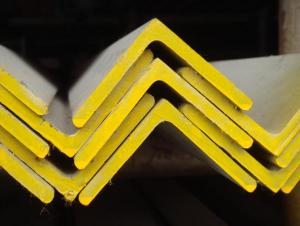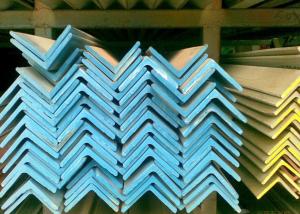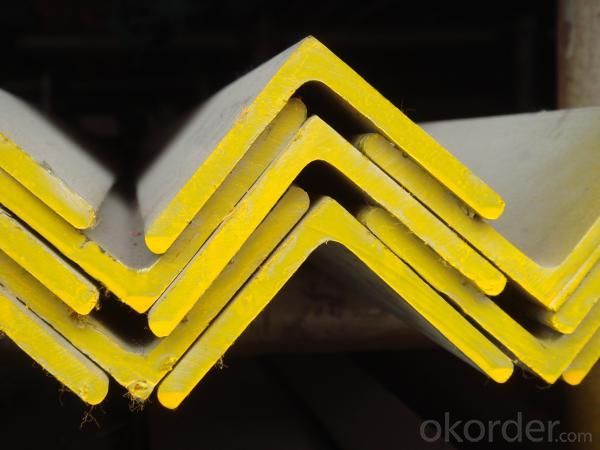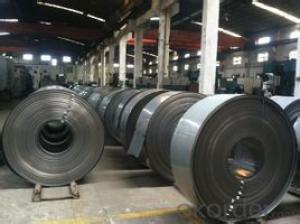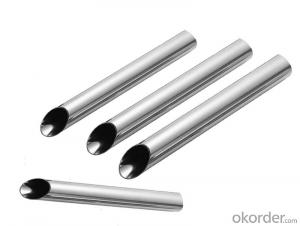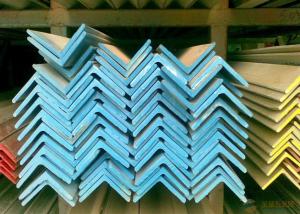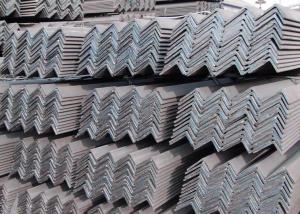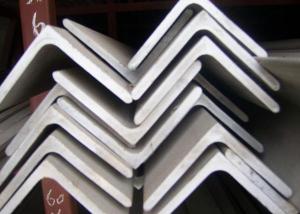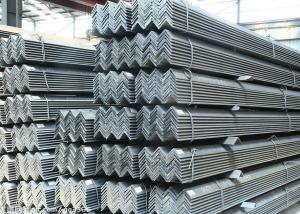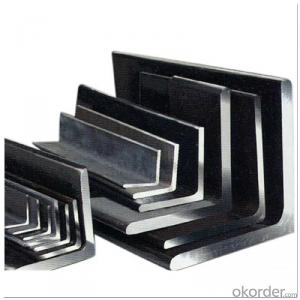Best Quality for Stainless Steel Angle Bar
- Loading Port:
- China Main Port
- Payment Terms:
- TT or LC
- Min Order Qty:
- 1 Ton m.t.
- Supply Capability:
- 500 Tons Per Month m.t./month
OKorder Service Pledge
OKorder Financial Service
You Might Also Like
General Informaiton of Stainless Steel Angle Bar
1. Grade: SS200, 300,400 series
2. Size: 25×25×3 mm-100×100×10mm
3. Process: HRAP
4. Length: 2-6m
5. Shape: Equal
6. Delivery: within 20 days
7. MOQ: 1 ton
8. Certificate: ISO 9001:2008, SGS
9. Package: Standard Export Packing, or put into wooden boxes according to your requirement
10. Application: Construction, Marine, Industry etc.
Specification of Stainless Steel Angle Bar
Name | Stainless Steel Angles | |||||
Standard | ASTM A554, A312, A249, A269 and A270 | |||||
Material Grade | 304,316,201,202, 316L,430 | |||||
Length | 6m or as customers' request | |||||
Tolerance | a) Thickness: +/-0. 15mm | |||||
b) Length: +/-4. 5mm - 0mm | ||||||
Surface | 180G, 320G, 400G Satin / Hairline(Matt Finish, Brush, Dull Finish) 400G, 500G, 600G or 800G Mirror finish | |||||
Application | Decoration construction, upholstery, industry instruments | |||||
Test | Squash test, Extended test, Water pressure test, Crystal rot test, Heat treatment, NDT | |||||
Chemical Composition of Material | Composition Material | 201 | 202 | 304 | 316 | 430 |
C | ≤0.15 | ≤0.15 | ≤0.08 | ≤0.08 | ≤0.12 | |
Si | ≤1.00 | ≤1.00 | ≤1.00 | ≤1.00 | ≤1.00 | |
Mn | 5.5-7.5 | 7.5-10 | ≤2.00 | ≤2.00 | ≤1.00 | |
P | ≤0.06 | ≤0.06 | ≤0.045 | ≤0.045 | ≤0.040 | |
S | ≤0.03 | ≤0.03 | ≤0.030 | ≤0.030 | ≤0.030 | |
Cr | 16-18 | 17-19 | 18-20 | 16-18 | 16-18 | |
Ni | 3.5-5.5 | 4-6 | 8-10.5 | 10-14 | ||
Mo | 2.0-3.0 | |||||
Mechanical Property | Material Item | 201 | 202 | 304 | 316 | |
Tensile Strength | ≥535 | ≥520 | ≥520 | ≥520 | ||
Yield Strength | ≥245 | ≥205 | ≥205 | ≥205 | ||
Extension | ≥30% | ≥30% | ≥35% | ≥35% | ||
Hardness (HV) | <253 | <253 | <200 | <200 | ||
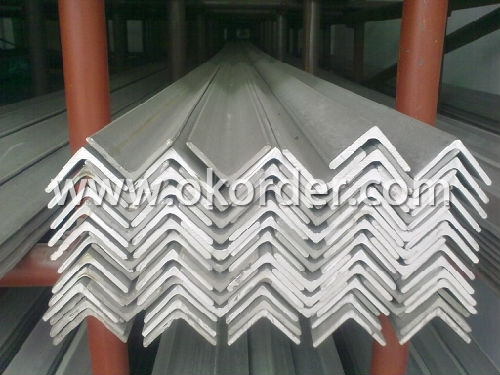
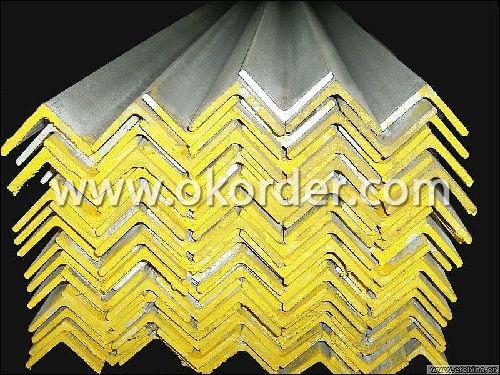
- Q:What are the typical tolerances for stainless steel angles?
- The typical tolerances for stainless steel angles vary depending on the specific dimensions and manufacturing standards. However, common tolerances for stainless steel angles typically range between +/- 0.005 inches to +/- 0.030 inches for dimensions such as width, height, and thickness. It is important to consult the relevant industry standards or specific supplier for accurate and precise tolerances.
- Q:Now, what's the price of the 201 stainless steel angles?
- Depends on the specific specifications, the prices of different specifications201 of stainless steel is now considered as ordinary material, without magnetic or nickel. If you want high, you should use 304 stainless steel, 6.5 yuan more than 201 yuan a kilogram.
- Q:Do stainless steel angles require any special handling or storage?
- Yes, stainless steel angles do require some special handling and storage to ensure their longevity and maintain their quality. Here are a few important considerations: 1. Protection from moisture: Stainless steel is resistant to corrosion, but it is still susceptible to staining or rusting when exposed to moisture for extended periods. Therefore, it is crucial to store stainless steel angles in a dry environment. Avoid areas with high humidity or direct contact with water. 2. Avoid contact with other metals: When storing stainless steel angles, it is essential to avoid contact with other metals, especially those that are less corrosion-resistant. This can prevent galvanic corrosion, which occurs when two different metals come into contact with an electrolyte, causing one of them to corrode. Store stainless steel angles separately from other metals, or use non-metallic separators if storing them together. 3. Protection from scratches and surface damage: Stainless steel angles can be easily scratched or damaged, which can affect their appearance and integrity. To prevent this, handle them with care and use appropriate lifting and transportation equipment to avoid any accidental damage during storage or movement. Additionally, consider using protective coverings or wrapping the angles in a material that won't scratch the surface. 4. Proper stacking and support: When storing stainless steel angles, ensure they are stacked evenly and supported adequately to prevent deformation or bending. Avoid overloading or placing heavy objects on top of the angles, as this can cause stress and structural damage. 5. Cleanliness: Before storing stainless steel angles, make sure they are clean and free from any contaminants. This can be achieved through proper cleaning and drying processes. Avoid using abrasive cleaners or tools that can scratch or damage the surface. Additionally, periodic cleaning and maintenance during storage can help prevent any buildup of dirt or debris. By following these guidelines, you can ensure that stainless steel angles are stored properly, reducing the risk of damage, corrosion, or other issues that may affect their quality and performance.
- Q:Can stainless steel angles be used for pedestrian bridges?
- Yes, stainless steel angles can be used for pedestrian bridges. Stainless steel is a strong and durable material that offers excellent resistance to corrosion, making it suitable for outdoor applications. Additionally, stainless steel angles provide structural support and can be easily fabricated to meet the specific design requirements of pedestrian bridges.
- Q:Can stainless steel angles be used in the automotive industry?
- Indeed, the automotive industry does utilize stainless steel angles. The reason for this lies in stainless steel's remarkable resistance against corrosion, a crucial aspect when dealing with a high-moisture and salt-laden environment such as the automotive industry. One can find stainless steel angles being employed in a variety of roles including structural components, brackets, supports, and frames. Their strength and durability render them suitable for enduring the demands of daily use and the harsh conditions on the road. Furthermore, the ease with which stainless steel angles can be welded allows for customization and simplifies the assembly process in automotive manufacturing. In summary, stainless steel angles serve as a dependable and versatile choice of material for the automotive industry.
- Q:What is the weight calculation formula for stainless steel angles?
- The weight calculation formula for stainless steel angles can be obtained by multiplying the density of stainless steel by the cross-sectional area of the angle. The density of stainless steel is typically around 7.9 g/cm³ or 7900 kg/m³. The cross-sectional area of the angle can be determined by multiplying the thickness of the stainless steel angle by the sum of the width and height of the angle. The thickness, width, and height are usually measured in millimeters (mm). Therefore, the weight (W) of a stainless steel angle can be calculated using the formula: W = (Density) x (Thickness) x (Width + Height) where W is the weight of the angle in kilograms (kg).
- Q:Are stainless steel angles heat resistant?
- Yes, stainless steel angles are heat resistant. They have excellent resistance to high temperatures and can withstand heat without losing their strength or shape.
- Q:What is the maximum length tolerance for stainless steel angles?
- The specific grade and manufacturing standards of stainless steel angles can cause the maximum length tolerance to fluctuate. Typically, the length tolerance for stainless steel angles falls within the range of +/- 1/8 inch to +/- 1/4 inch. Nevertheless, it is crucial to refer to the manufacturer's specifications or industry standards pertaining to the particular stainless steel angle in use in order to ascertain the precise maximum length tolerance.
- Q:Are stainless steel angles corrosion resistant?
- Yes, stainless steel angles are corrosion resistant. Stainless steel is an alloy that contains chromium, which forms a protective layer on the surface of the metal when exposed to oxygen. This layer, known as the passive layer, prevents corrosion and protects the underlying metal from getting damaged. Stainless steel angles are commonly used in environments where corrosion is a concern, such as in marine and industrial applications. The corrosion resistance of stainless steel angles makes them durable and long-lasting, even in harsh conditions.
- Q:How do stainless steel angles contribute to the overall sustainability of a product?
- There are several ways in which the sustainability of a product is enhanced by stainless steel angles. To begin with, stainless steel itself is an incredibly sustainable material. It is primarily made from iron ore, which is one of the most abundant elements found on Earth. As a result, stainless steel is readily available and its production does not significantly deplete natural resources. Furthermore, stainless steel is renowned for its exceptional durability and longevity. It is highly resistant to corrosion, tarnishing, and wear, meaning that products constructed with stainless steel angles have a longer lifespan compared to those made with alternative materials. This reduces the need for frequent replacements, thereby decreasing the overall environmental impact associated with manufacturing, transportation, and disposal. Moreover, stainless steel is entirely recyclable, making it a closed-loop material. This signifies that at the end of its useful life, stainless steel angles can be recycled and repurposed into new products without any loss in quality or performance. The process of recycling stainless steel requires only a fraction of the energy and resources needed for its initial production, further reducing its environmental footprint. Additionally, stainless steel is non-toxic and does not release harmful chemicals or pollutants into the environment. This makes it a safe and sustainable choice for various applications, including in the construction, automotive, and manufacturing industries. Lastly, stainless steel angles contribute to the overall sustainability of a product by offering design flexibility. The unique shape and structural properties of stainless steel angles allow for efficient use of materials, minimizing waste during the manufacturing process. Consequently, this leads to a more sustainable utilization of resources and a reduced carbon footprint. In conclusion, stainless steel angles play a pivotal role in enhancing the overall sustainability of a product. From the sustainable sourcing of materials to its durability, recyclability, and non-toxic nature, stainless steel angles provide numerous environmental benefits. As a result, they are widely favored for sustainable product design and manufacturing.
1. Manufacturer Overview |
|
|---|---|
| Location | Jiangsu,China |
| Year Established | 2002 |
| Annual Output Value | Above US$ 8 Million |
| Main Markets | China, East Asia, |
| Company Certifications | ISO9001:2000; |
2. Manufacturer Certificates |
|
|---|---|
| a) Certification Name | |
| Range | |
| Reference | |
| Validity Period | |
3. Manufacturer Capability |
|
|---|---|
| a)Trade Capacity | |
| Nearest Port | Shanghai |
| Export Percentage | 40% |
| No.of Employees in Trade Department | 30 People |
| Language Spoken: | English;Chinese |
| b)Factory Information | |
| Factory Size: | Above 26,000 square meters |
| No. of Production Lines | Above 6 |
| Contract Manufacturing | OEM Service Offered;Design Service Offered |
| Product Price Range | Average |
Send your message to us
Best Quality for Stainless Steel Angle Bar
- Loading Port:
- China Main Port
- Payment Terms:
- TT or LC
- Min Order Qty:
- 1 Ton m.t.
- Supply Capability:
- 500 Tons Per Month m.t./month
OKorder Service Pledge
OKorder Financial Service
Similar products
New products
Hot products
Hot Searches
Related keywords
